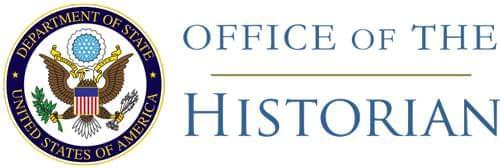341. Memorandum From the Director of the Office of Philippine and Southeast Asian Affairs (Young) to the Assistant Secretary of State for Far Eastern Affairs (Robertson1
SUBJECT
- Vientiane 967, February 3,2 re Lao Force Basis
In the telegram under reference Ambassador Yost and the Country Team make the completely justified and urgent request that Washington take the necessary decisions as soon as possible in order that the Lao Government may be informed of the National Army force level which the U.S. is prepared to support and the military aid it is prepared to grant during Calendar Year 1956.
The question of the force basis has been knocking around the Pentagon since mid-December. It involves increasing the JCS-approved level of 23,650 (you will remember the difficulties we had extracting this figure a year ago) to 25,000, a matter of 1,350 bodies. Strongly held opinion in Defense has broken down generally into the following categories: 1) Outright opposition, particularly owing to the estimate that the extra troops would cost the U.S. Government [Page 739] an additional $2 million and were not militarily justified; 2) the desire to go along with the Ambassador on political grounds subject to the concurrence of the Department of State; and 3) the view that there was insufficient information available on which to base any decision at all. We learned early this week that, whereas previously it had been thought unnecessary to send a problem involving only 1,350 men to the JCS, the question was now being considered by that group at the insistence of Mr. Gray’s office. On the basis of this information we sent a brief holding message to Ambassador Yost on the 31st.3
Late last night we were told that the JCS were unable to come to a decision yesterday and were to give the Lao force basis question top-priority consideration next Wednesday, February 8.
So much hassling over 1,350 bodies appears quite out of keeping when the area concerned is the scene of Communist armed action and where it is U.S. policy to prevent a fall to Communist domination. On the other hand, we are inclined to agree with the statement that available information is insufficient for a military decision. Agreeing that the 23,650 level should not be raised are a CINCPAC survey team and MAAG/Viet-Nam; CINCPAC himself recommends that the level be increased to 25,000. The Department is somewhat hampered in its justification of the 25,000 level by the fact that Defense can point to Embassy Vientiane’s concurrence in the 23,650 figure on December 1 (with the reservation that the reduction be accomplished only when politically wise) and in the 25,000 level on December 19. The PEO … has not been in Vientiane long enough to do a thorough study.
It should also be noted that, although the approved force basis has since February 1955 been 23,650, the Lao Government has never been pressed into reducing sooner than it deemed advisable and in fact the U.S. has been supporting the forces in being (ranging from about 29,000 about a year ago to some 26,000–27,000 at the present time). There has therefore been no hardship on the Lao Government. Unless we are able to obtain approval of the 25,000 figure recommended by Ambassador Yost (and only a political justification seems feasible), Vientiane’s raising the issue of a U.S.-approved force basis may result in more harm than good.
With respect to the aid figure, the only reason ICA suggested the field not inform the Lao Government of the $30 million DS approval was that the amount was considerably lower than that desired by the Lao Government and knowledge thereof might damage its morale. Since the field wishes to communicate a total, interagency [Page 740] agreement should be relatively easy to obtain. I should expect, however, that Washington’s figure will be somewhat lower than the $37.5 million recommended by Vientiane, since the total proposed thus far for Calendar 1956 is $33.65 million ($30 million DS already approved and $3.65 million DFS in process).
Recommendations
- 1.
- That you telephone Admiral Radford before Wednesday, February 8, to set forth
the Department’s view that for political reasons the force level
supported by Ambassador Yost
is justified for Calendar Year 1956. Suggested points you might wish
to make are as follows:
- a.
- Laos is presently coping with the Communist Pathet Lao threat and fighting is likely to increase;
- b.
- It is U.S. national policy to assist Laos to defend its independence against Communist encroachment;
- c.
- A force level of 25,000 can be sold to the Lao Government and will enable us to insist on a reduction to that level and to use more effectively and economically U.S. military assistance funds. If the 25,000 figure is agreed upon, the Lao Government will be told it is valid for Calendar 1956 only and subject to review in the light of the political and military situation prevailing at the end of the year.
- d.
- With respect to the Defense-estimated additional cost of $2 million for the 1,350 men, we do not see how reducing from the present 26,000–27,000 level to 25,000 will cost us more money.
- 2.
- That you indicate to Admiral Radford the Department’s concurrence in CINCPAC’s recommendation that a 700-man Lao Air Force be developed within the 25,000 force basis.
- 3.
- That the field be informed of the approved force level immediately the JCS recommendation is known, whether or not it is favorable at this time, and that they also be given an aid figure for transmittal to the Lao Government. Meanwhile working-level representatives of the Department, Defense, and ICA will continue to attempt to reach an agreed position on the latter score.
- Source: Department of State, Central Files, 751J.5/2–356. Secret. Drafted by Byrne and cleared by Hoey.↩
- Document 339.↩
- Telegram 762 to Vientiane, January 31, not printed. (Department of State, Central Files, 751J.5/1–456)↩
